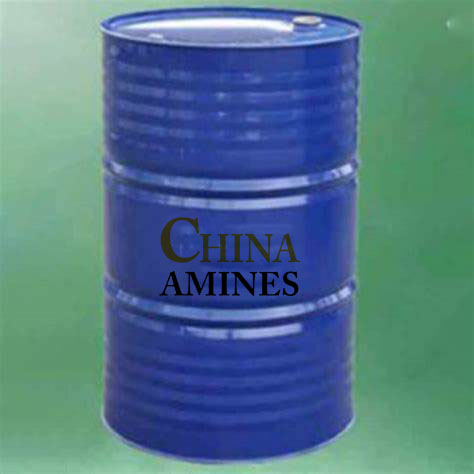1. Chemical Structure and Properties
Molecular Formula: C₄H₈O
Structural Formula:
CH₃-C(=O)-CH₂-CH₃
A polar aprotic solvent with a ketone functional group.
Physical Properties:
Appearance: Clear, colorless liquid with a sharp, acetone-like odor.
Boiling Point: 79.6°C; Density: 0.805 g/cm³; Vapor Pressure: 9.5 kPa at 20°C.
Solubility: Miscible with water (27.5 g/L at 20°C) and most organic solvents (e.g., ethanol, ether).
Chemical Properties:
Reactivity: Forms peroxides upon prolonged exposure to air; reacts with strong oxidizers.
Flammability: Highly flammable (flash point: -6°C; autoignition temperature: 505°C).
Stability: Stable under normal conditions but decomposes at high temperatures to CO and hydrocarbons.
2. Industrial Applications
Solvent Industry:
Coatings & Inks: Primary solvent for nitrocellulose lacquers, acrylics, and epoxy resins.
Adhesives: Used in rubber-based adhesives and PVC cement formulations.
Chemical Synthesis:
Intermediate: Produces methyl ethyl ketone peroxide (MEKP, a polymerization catalyst).
Electronics:
Cleaning Agent: Removes fluxes and oils from printed circuit boards (PCBs).
Pharmaceuticals:
Extraction Solvent: Isolates alkaloids and steroids in drug synthesis.
3. Safety and Toxicology
Acute Exposure:
Inhalation (≥200 ppm): Irritates respiratory tract; causes dizziness and headaches (TLV-TWA: 200 ppm).
Skin Contact: Causes irritation and dermatitis (rabbit skin LD₅₀: >2,000 mg/kg).
Ingestion: Moderately toxic (oral LD₅₀ rat: 2,700 mg/kg); gastrointestinal damage.
Chronic Effects:
Neurotoxicity: Prolonged exposure linked to peripheral neuropathy and CNS depression.
Carcinogenicity: Not classified by IARC; limited evidence of genotoxicity (Ames test negative).
Protection Measures:
PPE: Nitrile gloves, explosion-proof ventilation, and vapor respirators.
Storage: Store in flame-resistant containers with inert gas padding to prevent peroxide formation.
4. Environmental and Regulatory Compliance
Environmental Impact:
Biodegradability: Rapid (OECD 301F: >90% in 28 days).
Aquatic Toxicity: LC₅₀ (fish, 96h): 50–100 mg/L; EC₅₀ (daphnia, 48h): 30–60 mg/L.
Atmospheric Impact: Classified as a VOC; contributes to ground-level ozone formation.
Regulatory Frameworks:
EU:
REACH: Registered (EC 201-159-0); CLP classified as Flam. Liq. 2 (H225).
USA:
EPA: Regulated as a VOC under Clean Air Act; TSCA-listed.
OSHA: PEL: 200 ppm (8-hour TWA).
China:
GB 13690-2009: Classified as Hazardous Chemical (Class 3.2).
Waste Management:
Incinerate in licensed facilities with VOC abatement; landfill disposal prohibited.
5. Case Studies and Application Insights
Case 1: Low-VOC Automotive Coatings (BASF, 2023):
Challenge: Reduce VOC emissions in automotive spray paints.
Solution: Replaced 30% of MEK with bio-based ethyl lactate.
Result: Achieved 25% lower VOC emissions (ASTM D6886) while maintaining drying time (ASTM D5895).
Case 2: Green Electronics Cleaning (Samsung, 2022):
Process: Adopted MEK-free aqueous cleaners for PCB assembly.
Impact: Eliminated VOC emissions and met IEC 62474 sustainability standards.
Comparative Analysis:
MEK vs. Acetone:
Pros: Higher solvency for resins; lower evaporation rate (better for spray applications).
Cons: Higher toxicity and flammability.
MEK vs. Ethyl Acetate:
Pros: Faster evaporation; better compatibility with polar polymers.
Cons: Ethyl acetate is less toxic but less effective for heavy degreasing.
Specifications:
Butanone, also known as methyl ethyl ketone (MEK) or ethyl methyl ketone, is an organic compound with the formula CH3C(O)CH2CH3. This colorless liquid ketone has a sharp, sweet odor reminiscent of acetone. It is produced industrially on a large scale, but occurs in nature only in trace amounts. It is partially soluble in water, and is commonly used as an industrial solvent. It is an isomer of another solvent, tetrahydrofuran.


